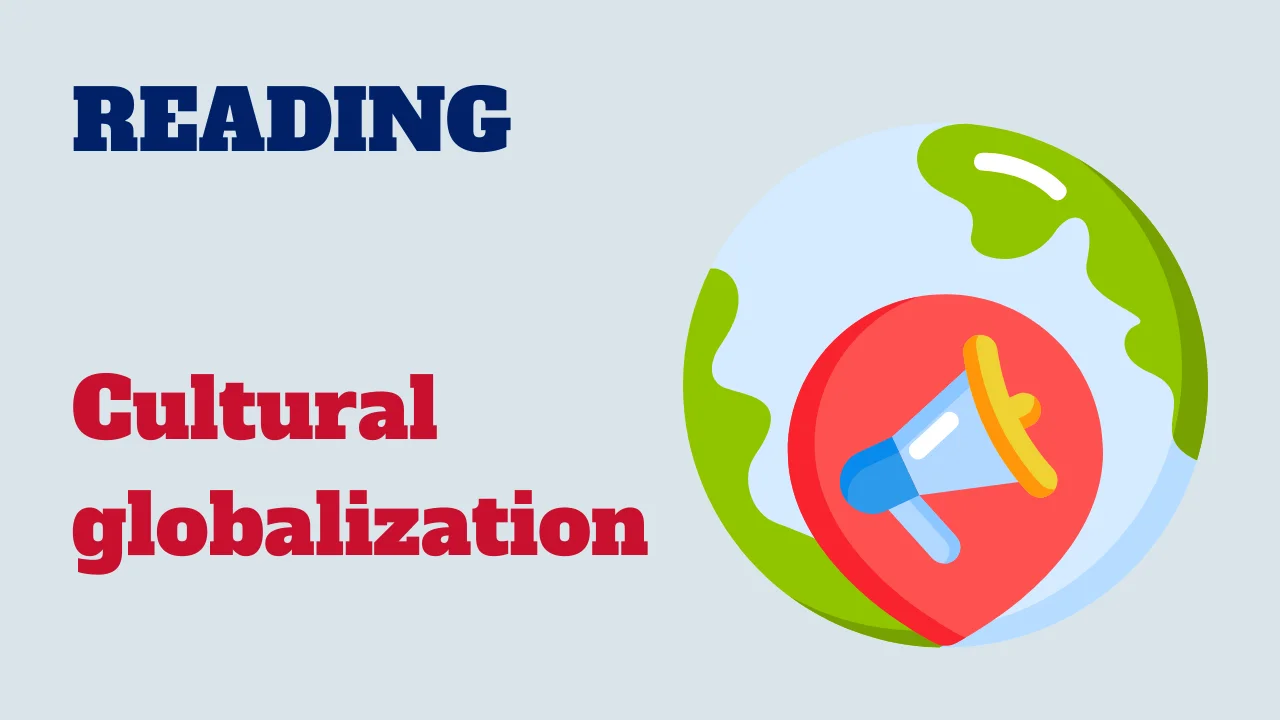Welcome to an investigation of cultural globalization, a phenomenon that has reshaped societies and interconnected people across the globe. In this reading activity, we will look at the transmission of ideas, values, and cultural elements in the age of globalization.

From the impact of the Internet and mass media to the spread of religions and the challenges of cultural homogenization, let’s unravel the complexities of cultural globalization.
Text: Cultural globalization
Cultural globalization describes the process where cultures from different parts of the world interact, blend, and influence each other, driven by advancements in communication, trade, and travel. This phenomenon has grown rapidly in recent decades, reshaping cultural identities, practices, and consumption patterns globally.
Mechanisms of cultural globalization:
Media and technology are central to cultural globalization. The internet, social media, and streaming services allow for the global dissemination of cultural products like movies, music, and art. People can now access and share diverse cultural content instantly, leading to the rapid spread of ideas and trends. Hollywood films, K-pop, and global news networks illustrate how media facilitates cultural exchange and shapes global perceptions.
Trade and commerce also play significant roles. Multinational corporations introduce and market products worldwide, influencing local lifestyles and consumer behaviors. Brands like Coca-Cola, McDonald’s, and Nike have become global icons, often blending into local cultures while maintaining a universal appeal. This commercial exchange fosters a global marketplace where cultural elements are traded and adopted widely.
Migration and tourism enable direct cultural interaction. Migrants bring their cultural practices to new countries, enriching host societies with diverse traditions, cuisines, and languages. Similarly, tourism exposes individuals to different cultures, encouraging the exchange of customs and fostering multicultural understanding.
Impacts and challenges:
Cultural globalization offers opportunities for cultural enrichment by exposing people to diverse perspectives and practices. It encourages creativity, innovation, and the blending of traditions, leading to new cultural forms and hybrid identities.
However, it also poses risks of cultural homogenization, where dominant cultures overshadow local traditions, potentially eroding cultural diversity. The widespread influence of Western culture through media and brands can diminish indigenous practices and languages, threatening cultural heritage.
Balancing act:
To balance the benefits and challenges of cultural globalization, it is crucial to promote cultural exchange while protecting local identities. This involves supporting local cultures through initiatives like preserving indigenous languages and traditional arts, and fostering intercultural dialogue to appreciate and respect diverse cultural expressions.
Comprehension questions
Congratulations on completing the exploration of cultural globalization! By examining the transmission of ideas, values, and cultural elements across borders, you’ve gained insights into the interconnectedness of societies in the modern world. Remember, while cultural globalization enhances cross-cultural exchange and connectivity, it also raises questions about the preservation of unique cultural traditions and identities. Stay curious as we navigate the complexities of cultural globalization and its implications for societies worldwide!



